Domestic Violence Among Indian Families and its Impact on the Brain
I can still picture Maya Aunty vividly—her innocent smile, marred slightly by her crooked teeth; her calloused hands, shaped by years of scrubbing dishes; and the unmistakable pain that lingered in her eyes. Maya Aunty wasn’t just someone who helped us clean the house; she was a comforting presence, occasionally babysitting me when my mother worked late. But beneath her quiet demeanor lay a harrowing reality I was too young to understand—her evenings were marked not by rest, but by fear, tears, and relentless physical abuse.
- Dnyanada
- November 13, 2024
Warning: Some content may be distressing or triggering to readers who have experienced or are sensitive to such topics. Please proceed with caution and prioritise your emotional well-being.
I can still picture Maya Aunty vividly—her innocent smile, marred slightly by her crooked teeth; her calloused hands, shaped by years of scrubbing dishes; and the unmistakable pain that lingered in her eyes. Maya Aunty wasn’t just someone who helped us clean the house; she was a comforting presence, occasionally babysitting me when my mother worked late. But beneath her quiet demeanor lay a harrowing reality I was too young to understand—her evenings were marked not by rest, but by fear, tears, and relentless physical abuse.
Domestic violence consists of a pattern of behaviours used to gain or maintain control over an intimate partner, which may include any of physical harm, emotional abuse, sexual assault, financial manipulation, and psychological intimidation.
The Perspective of Victim
Victims often develop emotional attachments to their abusers, a phenomenon known as trauma bonding. This occurs due to a tactical cycle of affection followed by abuse by the perpetuator, which makes it difficult for the victim to leave the relationship. Compounding on this phenomenon is learned helplessness, victims subjected to repeated abuse, may come to believe that they are powerless to change their circumstances, fostering a sense of resignation.
The Perspective of Perpetuator
On the other side of the equation, abusers struggle with deep-seated feelings of insecurity and inadequacy, often masked by controlling or violent behaviors. These individuals may exhibit traits of narcissism or antisocial personality disorder, using violence as a means to assert dominance and maintain control. The behavior of many perpetrators is rooted in their own histories—having witnessed or experienced abuse themselves, they often normalize violence as a method of resolving conflict or asserting power. Furthermore, cognitive distortions, which includes thoughts that justify their actions by blaming the victim or downplaying the harm they cause, help the abuser avoid responsibility and continue the cycle of abuse.
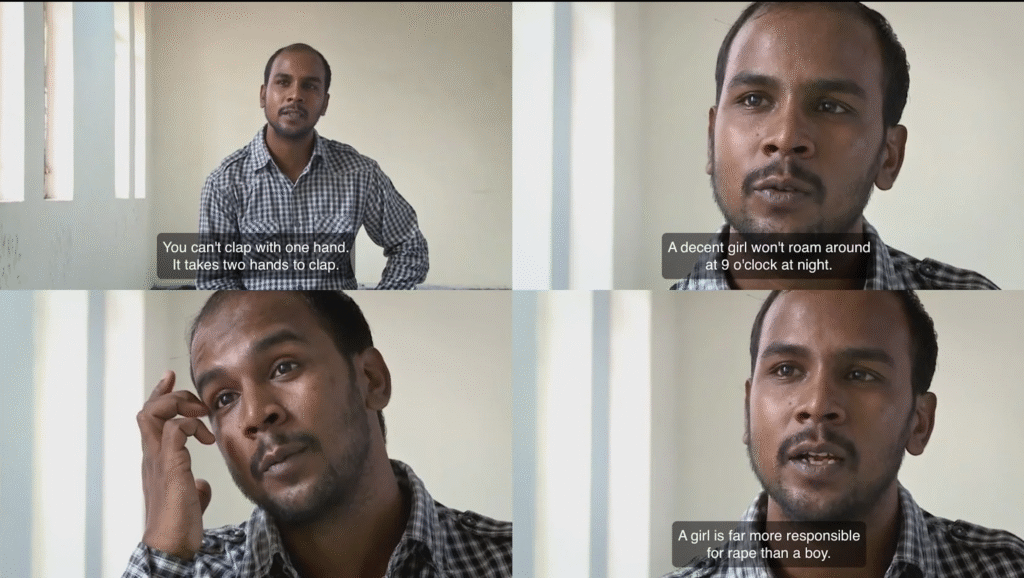
A classic example of cognitive distortion by abuser. Snapshot of Nirbhaya’s rapist justifying his crime.
Source: India’s daughter, Leslee Udwin (2015)
Impact of Abuse on the Brain
It’s no surprise that violence deeply impacts mental health, often leading to PTSD, anxiety and depression. But does domestic violence physically alter the brain? In a study comparing survivors of violence to those without such experiences, researchers found changes in how certain brain networks communicate. The altered networks were
DMN – which helps us to self-reflect,
SN – which detects our environment and alerts us in case of a stressful event,
FPN – which helps us focus and create goals and decisions
Survivors showed a stronger connection between the DMN and SN, possibly making them feel more emotional or sensitive to stress. They also had a weaker DMN/FPN connection, which could make it difficult for them to shift from thinking about themselves to concentrating on their goals. This may result in overthinking, decision-making problems, and difficulties managing emotions, complicating daily life and trauma recovery.
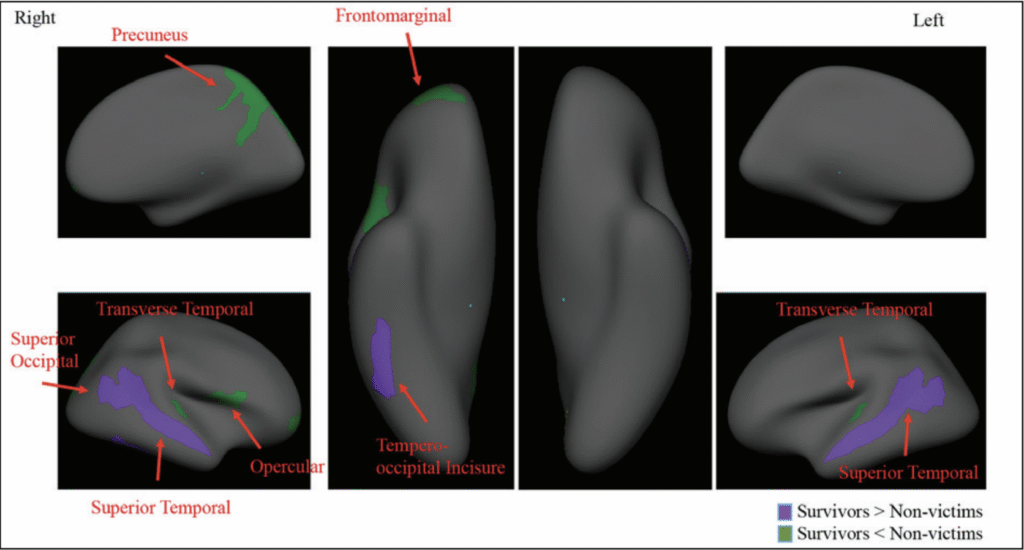
Smaller brain volume in areas linked to processing fear, as observed in survivors (shaded in violet)
Source: Daugherty, J et al,(2022)
Another study showed that victims of brain injury due to domestic violence had smaller brain volumes, especially in regions tied to processing of fearful-triggers, as compared to women who hadn’t. The severity of the violence, history of childhood trauma, presence of head injuries, and whether the participant was strangulated was directly correlated to these structural changes.
Domestic Violence in India
When I looked at the hard-core stats by the National Family Health Survey V, which assessed over 72,000 women aged 18-49, I was stunned. Imagine being part of a crowd of 10 women—three of them have endured physical violence at some point in their lives. A closer look reveals a disturbing pattern: women married to controlling partners are at an alarmingly higher risk. If a husband exerts dominance through behaviors like demanding to know her whereabouts at all times, isolating her from friends and family, accusing her of infidelity without proof, or withholding money, his wife has a 75% chance of facing violence, compared to just 17% for women whose husbands show no such tendencies.
Alcohol adds fuel to the fire. For women whose husbands drink heavily, the risk skyrockets—71% endure abuse, compared to 23% married to non-drinkers. Sadly, marriage itself seems to be a risk factor; three-quarters of married women report experiencing violence, and in 83% of these cases, their husband is the perpetrator.
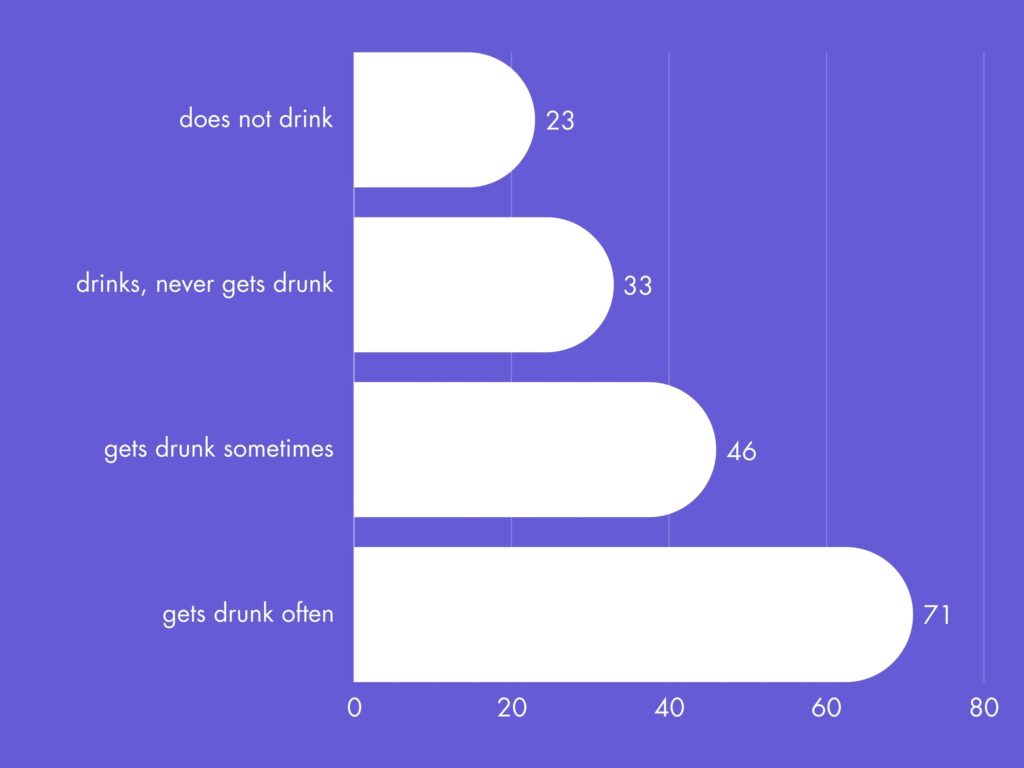
Source: NFHS-V (2019-21)
What’s even more heartbreaking? Violence often starts early in the marriage—11% of women face abuse within the first two years, and by the fifth year, the number jumps to 21%. These numbers aren’t just statistics; they represent real lives, trapped in cycles of fear, isolation, and control.
How Indian culture propagates violence
In Indian culture, deeply ingrained beliefs and social pressures may unintentionally perpetuate violence, especially within marriage. Shockingly, 45% of women and 44% of men believe a husband is justified in beating his wife. What’s even more alarming is that 40% of the women who supported this notion had themselves experienced spousal violence. This cycle of justification often begins in childhood, as women who witnessed their fathers beat their mothers are far more likely to endure abuse in their own marriages—58% in fact.
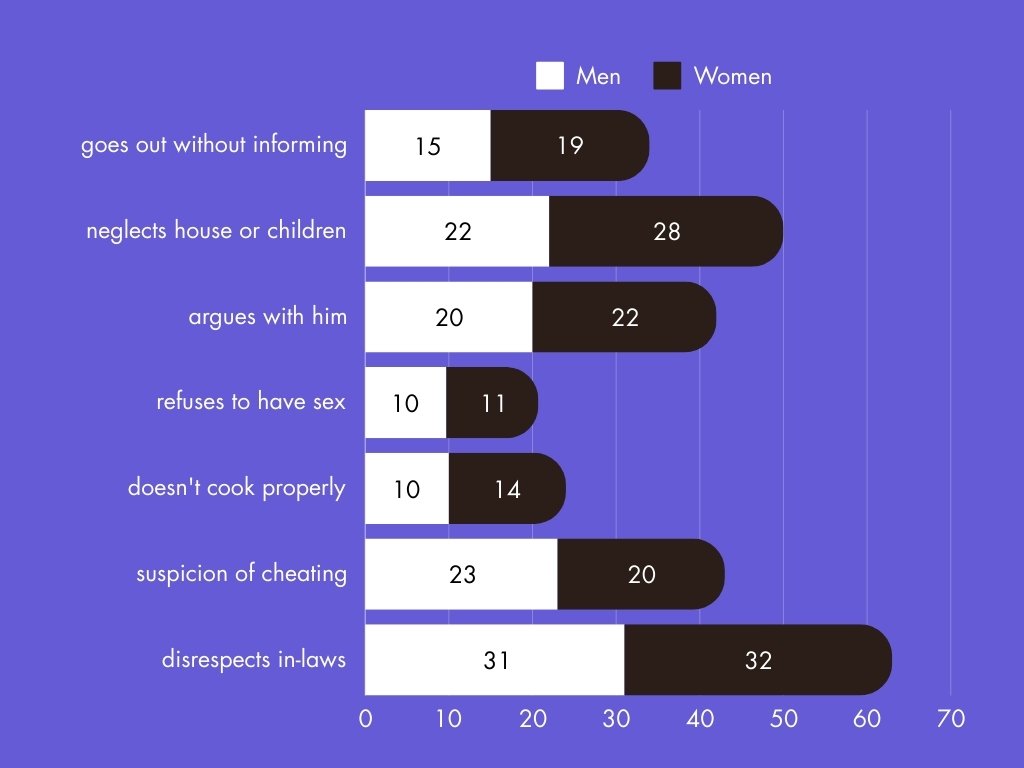
Disrespecting in-laws was the most selected justification for wife beating
Source: NFHS-V (2019-21)
Cultural stigma around discussing violence, societal pressure to “adjust” to one’s partner, and the confusing cycle of love-bombing and abuse keep many women trapped. Economic and educational factors also play a role. For example, women with little or no schooling are far more likely to experience violence (38.1%) compared to those with 12 or more years of education (17.7%). Interestingly, women in marriages where both partners are equally educated face less violence (26%) compared to those where the husband is either more educated or uneducated (43%)
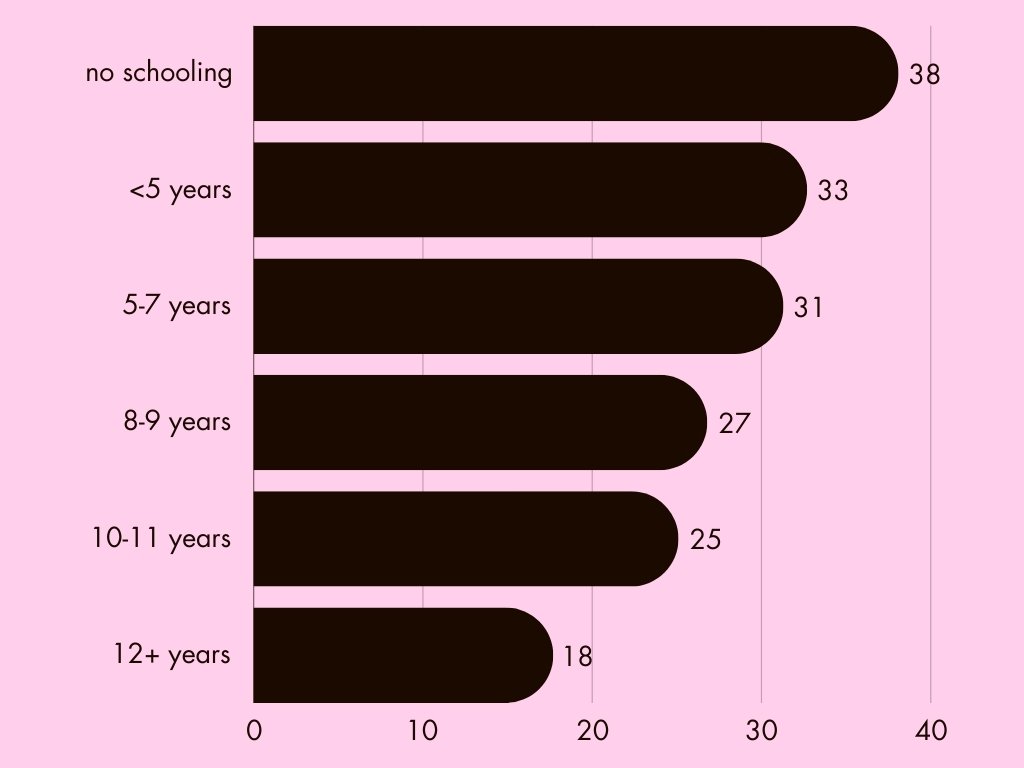
Source: NFHS-V (2019-21)
Conclusion
Domestic violence is a pervasive issue that devastates lives, leaving survivors with emotional scars, cognitive struggles, and physical consequences that often go unseen. From Maya Aunty’s quiet resilience to the staggering statistics that highlight the scale of the problem, it’s clear that this issue is not confined to individual households—it is a societal crisis rooted in cultural norms, lack of education, and systemic gender inequality.
But there is hope. Breaking free from the cycle of violence begins with breaking the silence. For survivors, seeking support—whether through trusted friends, family, or professional counseling—can be the first step toward healing and reclaiming control over their lives.
If you or someone you know is experiencing domestic violence, know that help is available. Reach out to a counselor or a trusted support network. Together, we can replace cycles of abuse with cycles of support, understanding, and empowerment.
Liked what you read?
Sign up and get the latest blog posts delivered straight to your inbox.
We respect your privacy
Related Arcticles

Grief Explained: How our brains process loss
Discover the emotional and neurological aspects of grief, how rituals aid in healing, and why it’s okay to take your time.

Craving Connection: A Scientific Look at Why We Feel Lonely
Dive into the neuroscience of loneliness and discover why our brains crave real connection.
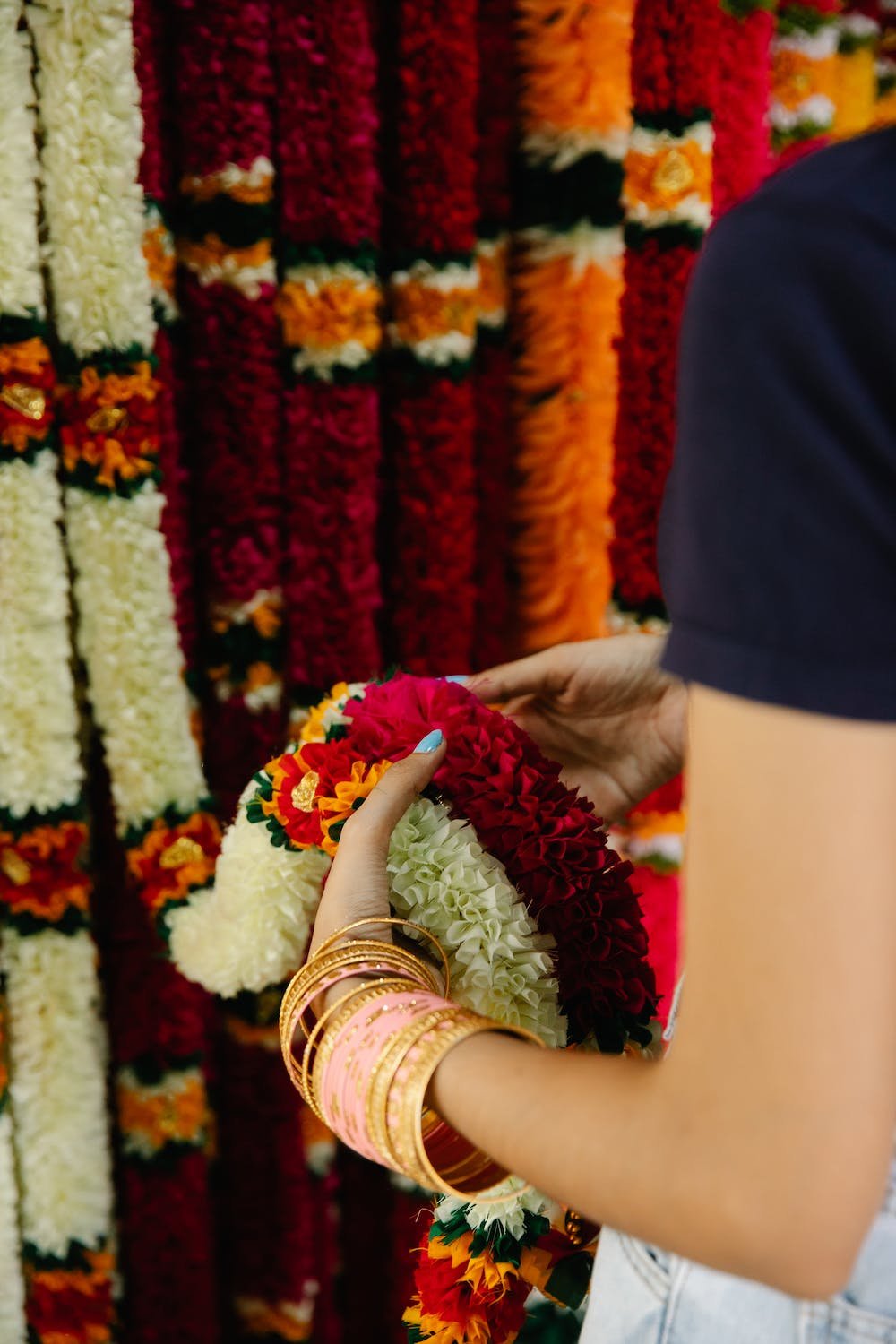
Figuring out your identity after the big fat indian wedding
Explore the identity struggles women face after marriage, from navigating family ties to redefining your place in the world.
